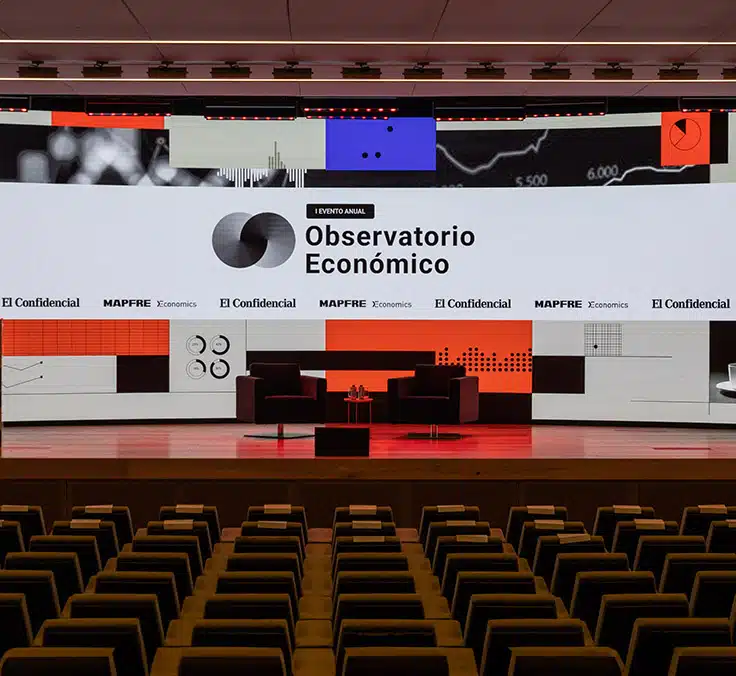ECONOMY | 02.07.2025
Rising geoeconomic tensions: What impact do they have on global trade?
Trade tensions have intensified in recent days following U.S. President Donald Trump’s announcement of a 25% tariff on imports from Mexico and Canada (with a 10% tariff on Canadian energy products), which will be subject to a one-month grace period, as well as a 10% tariff on imports from China. The signing of these executive orders comes after last week’s clash with Colombia, when President Gustavo Petro rejected deportation flights from the United States. In response, a 25% tariff was imposed on Colombia, leading the nation to eventually agree to accepting the deportation flights.
The World Economic Forum ranks geoeconomic tensions as the ninth most significant risk for the next two years, according to its Global Risks Report 2025. This risk has climbed five positions since the previous edition. “The new U.S. administration has suggested it will implement tariffs on imports from all its trading partners, particularly targeting China, Mexico, and Canada,” the report states.
Given the recent implementation of these decisions, the worst-case scenario for the next two years seems increasingly likely: not only will States impose tariffs on the countries and blocs that have already implemented them, but on all their trade partners as well. “This widespread imposition of tariffs could lead to a contraction in global trade,” warns the World Economic Forum, highlighting the potential escalation of the trade war between China and the United States.
Eduardo García Castro, senior economist at MAPFRE Economics, explains that these tariffs represent a supply shock by increasing production costs. “A product that once cost X will now cost X plus the tariff, and someone will have to pay the difference. There are three possibilities. One is that U.S. consumers will bear the costs of inelastic goods (goods for which demand hardly changes despite variations in price, such as umbrellas on a rainy day). For goods that are not inelastic, the company may absorb the cost at the expense of smaller margins. And then there’s a third option: currency,” he says.
García Castro emphasizes that we are witnessing responses in all channels. “For every coercive measure, we see fluctuations in exchange rates, anticipating a competitive devaluation to absorb the impact, along with a parallel correction in the affected sectors due to expected margin deterioration,” he notes. “Economic theory suggests that both scenarios will eventually impact consumption, either through reduced purchasing power due to currency depreciation in trade (for both importers and exporters), or through the lag in business shocks, leading to lower disposable income and employment. In aggregate terms, both scenarios imply a loss in trade.”
In an open economy like Europe’s, with a structural energy deficit, a shortage of strategic raw materials, and some competitive lag, certain levels of imports are still necessary to support production. “This situation could limit the ability to absorb the impact provided by the devaluation mechanism if the currency weakening extends to its trading partners. In other words, a devalued currency could lead to imported inflation,” the MAPFRE Economics senior economist adds.
Geoeconomic tensions are a major concern in East Asia, where the risk is ranked third in Taiwan, China, and Hong Kong for the next two years. The report also specifies that South Korea is among the most exposed countries to U.S. tariff impositions, followed by China, Japan, Canada, and India, in that order. Brazil, the European Union (EU), Indonesia, Ireland, Italy, Kenya, Malaysia, Mexico, and Thailand are also noted as vulnerable.
- In general, the current fragmentation of the global economy will weaken the multilateral cooperation needed in various areas, from technological innovation to global health, energy, and infrastructure. “This will leave the world less prepared for the next pandemic and will push some humanitarian and public health issues lower on the global agenda,” concludes the World Economic Forum report.
What can be done to minimize this confrontation?
The World Economic Forum report outlines three actions to help mitigate the impact of this global confrontation.
1. Foster multilateralism through global treaties and agreements, with a particular emphasis on reforming the WTO to address conflict resolution, tariff imposition rules, and issues related to digital trade.
2. Build strategic relationships through “profound” regional agreements.
3. Strengthen the resilience of the domestic economy by enhancing the financial sector and investing in education, healthcare, and infrastructure.
RELATED ARTICLES:



